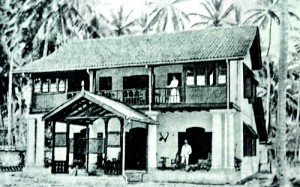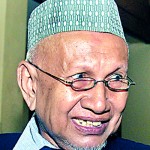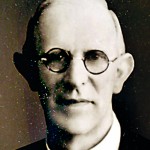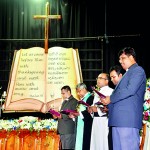From humble beginnings to great achievements
“When Carey calls her sons respond
With steadfast hearts and true
To venerate the Alma mater
With love and honour due…”
Carey College, the only Baptist school in the country, celebrated their centenary last Sunday, January 12 in their school auditorium. The event was graced by many of those who played a vital role in the history of the school, including teachers, parents and students. A special service was held with the chairperson (Central District) of the Methodist Church of Sri Lanka, Rev. Asiri Perera as the guest preacher and the participation of clergy of all denominations – Baptist, Anglican, Catholic and Methodist. All these priests significantly, were old boys of Carey.
The beginnings of Carey College were humble. When the Sri Lanka Baptist Missionary Sangamaya (SLBMS) celebrated its centenary year it was decided that there should be an English boarding school for boys in Colombo. After a suitable site was purchased in Kynsey Road, a missionary house, a boys’ hostel and a cubicle block for theological students were built. Later the Waldock main hall was added to commemorate the architect missionary, Rev. F. D. Waldock. The school was opened in 1914 with Rev. H.J. Charter (1914-1921) as its founding principal. It was he who introduced the school motto ‘Serve and Obey’- ‘Servi et Pare’ in 1919. The missionary house which was later on transformed into the Principal’s Residence still stands and is where the present principal, Hemamali Bibile resides.
 |
 |
| A landmark on Kynsey Road: Carey College, standing tall then and now. Pix by M.A. Pushpa Kumara | |
The school was named ‘Carey College’ to honour the pioneer Baptist missionary William Carey, and was started with a staff of just three- a headmaster and two assistants with just two students. By the end of the first term the student roll had increased to 40 and by the end of the year it was 100. By the end of the next year the school had classes from nursery to the eighth standard and eight teachers on the staff. The first prize giving was held at the end of 1915.
Though initially the school was begun with only Baptist students, soon students of all faiths were taken in. “We have students belonging to different faiths. Although we are primarily a Baptist school we respect all faiths and we encourage our students to do so as well. Our belief is that children should be taught to coexist with people of varied backgrounds in society from a very young age,” says Principal Ms. Bibile.
The school soon went on to present students for the Junior School Certificate and in 1924 for the Cambridge Senior School Certificate and London Matriculation entrance examinations and later on the University entrance examinations as well. The Boy Scouts movement which was just being introduced to the island was enthusiastically embraced and in 1918, the first troop from the school, started by C.W.F. Pereira was registered as the 12 Colombo Troop. In the following year, they brought honour to the school winning the Public cup for community service and the Challenge Shield which they retained for three years. Other developments were the formation of the literary association in 1919 soon followed by the school choir.
The house system was introduced in 1924 with three houses Arthington (purple and yellow), Carey (white and blue) and Waldock (red and black) being formed and in 1952 another house, Spooner (yellow and green) added to honour the benefactors of the school. The prefect system was introduced in 1939.
The Old Boys’ Union was formed in 1926 along with a Teachers’ Guild. Many buildings were added, renovated and converted during this time period. Many other changes took place although a greatly felt need through the years and even at the present is for a proper sports grounds. A kindergarten block was opened and later on a new building with six classrooms. The first Board of Governors was appointed in 1944 to revive the school after it closed for six months due to the Second World War. The crest of the school was designed the following year and made its first appearance on the school magazine in 1948. “Land of our Birth” was sung every morning to pledge allegiance to the motherland before the National Anthem was introduced.
 Proud old boy: T.A.K. Cassim |
 Present Principal: Hemamali Bibile |
 First Principal: H.J. Charter |
Vice Principal of the school D.W. Jayasinghe who was appointed in 1946 was among the longest serving, serving the school for 33 years. The legendary principal Rev. Dr. W.G. Wickramasinghe, who served the school for a glorious 21 years (1955-1976) and was also the first old boy principal, was an uncle of the present day principal. “Not only he, but my father and my husband were also from this school,” she adds. After his retirement, Vernon Weerasinghe, the first layman to hold the position took over.
Chithra Samarasinghe, the first headmistress of the school held the position for 20 years and served the school for four decades. She was replaced by Nalini Henderling in 2001 who remains in the position to date. In 1981 the first non Baptist principal D.W. W. Jayawardene was appointed.
The school has had many successes and rejoiced in its students’ achievements. An extract from the Principal’s review in 1953 states, “One boy who excelled in making toy aeroplanes and model planes is now in the RAF in London. Another boy who specialized in printing is now superintendent of the compositors section in the government press. Another came to be the best cricketer and all around sportsman in the island. Another was the first Carey boy to be a civil servant in a responsible government post. Another was the first from Carey to become a qualified medical doctor…” and the list goes on.
“I joined the school in 1950, received a double promotion for education excellence, and passed the Senior School Certificate examination in 1957,” says a proud old boy of the school, T.A.K. Cassim aged 75. In his day, there were only single classrooms with galvanized roofs. The student population was not that large, he recalls. Mr. Cassim joined the OBU in 1958 and went on to become the secretary and hold many other posts too. He was felicitated in 2008 for his services. “It was a wonderful time when I came to Carey but I think the students now have much better opportunities. I am very proud to have been a student here.”
The sporting feats achieved by Carey College have been numerous. Today Carey offers sports like rugby, football, badminton, swimming, table tennis and many more though their forte as a school will always be boxing, evident by the legend of W. Don Lesley who was a product of this school. Carey was also the first school to be affiliated to the “Ceylon Surf Life Saving Association” in 1965.
More recently in 1981, Carey student, Shabbir Hussain was voted as the ‘Most Popular All Island Schoolboy Cricketer’ after he achieved the dream double of scoring 1000 runs and taking 100 wickets in a season. Carey’s sporting prowess is proudly upheld by its present students, among them 16-year-old Rasanjaya Anuranga who is the goal keeper of the National Schools’ football team for the past four years. He has been playing football since grade three and hopes to play for the Under 23 national team once he leaves school.
The school also has a number of clubs and societies with one representing each religion and language, and catering to other interests like photography, nature, poetry, radio etc.
Carey College currently counts a student population of 2002 and a staff of 121. The school is divided into primary, junior and upper sections and includes grades one till 13. The school has produced many well known personalities-doctors, engineers, lawyers as well as businessmen and politicians who have contributed to the country and also shone in the international arena.
“We encourage our students to follow their talents and interests rather than follow the rat race,” says Principal, Mrs. Bibile. “The most unique quality I recognised and preserve in Carey is the student-teacher relationship. We respect our children for their individuality and we believe it’s important to create an interest in the student to come to school and study. This is why we create a student-friendly environment. We also encourage our students to follow their own faiths and customs and also to respect other traditions. It is important, especially at present, to respect one another.”
“I believe the role of the principal is not in their office rooms anymore but outside. I still teach the Advanced Level class English language because I enjoy teaching. I also always encourage my teachers to study. I am doing my MA in teacher instructing at the age of 62,” adds this dynamic principal with a smile.
Carey College is a fully private school which has an administration structure of a Board of Governors, Chaplain, Principal, Vice Principal, Headmistress/master etc. The BOG is headed by a Manager who is also the president of the SLBMS. The post is currently held by Rev. Priyantha Wijegunawardene. The school chaplain is Rev. William Wijeyekoon.
“Our hope is to create a God-fearing child, of any faith, and academically and spiritually sound citizen,” the Principal adds and Carey can indeed look back at a hundred years of making that contribution to society.
Commemorative activities galore
2014 will be an eventful year as the centenary celebrations continue through till 2015. On March 13, a stamp will be issued for the school with Minister of Posts, Jeevan Kumarathunga, also an old boy, as chief guest. This will be followed by an exhibition on March 13 and 14 and a centenary cricket and rugby match. An outreach project in Kekirawa and a Carey night for the public in July are also being planned. The 05th ‘Careyites Con-Brio’ band festival will take place on June 6 at the BMICH. A Carey walk will be held in October. The year will come to a close with felicitation of past principals and staff, the OBU dinner dance and the Carol Service. The launching of the Centenary souvenir will be on January 15, 2015. |


